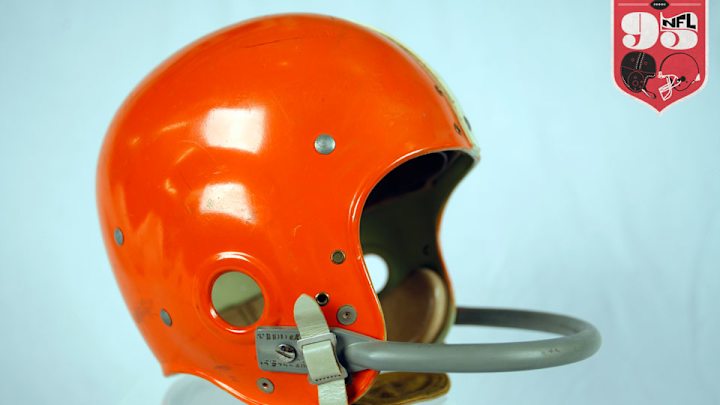Single-Bar Face Mask

The MMQB presents NFL 95, a special project running through mid-July detailing 95 artifacts that tell the story of the NFL, as the league prepares to enter its 95th season. See the entire series here.
Wearing full cage facemasks and tinted visors, some players are virtually unrecognizable on a football field. But it didn’t used to be that way.
Into the early 1950s, most players didn’t wear facemasks at all, except for a few improvised materials that first appeared as early as the 1920s. The dedicated facemask wasn’t born until Cleveland Browns founder Paul Brown asked equipment manager Leo Murphy to come up with a device that would allow star quarterback Otto Graham to remain in a game in 1953. Graham had suffered a lacerated mouth, and soon after, Brown devised a mask that could be permanently affixed to the helmet.
Other teams adopted the practice and a facemask largely became part of the NFL uniform by 1955. Veteran kicker Garo Yepremian was the last player to go without a facemask in 1967. Different species of the facemask were created, and soon players became recognized by their distinct facewear, from Larry Csonka’s nose guard to Ernie Stautner’s beak-like model produced by Marietta. But some players continued to hold true to the old single-bar facemasks, preferring the better sightlines into the 1980s and beyond. Former Redskins quarterback Joe Theismann was the last non-kicker to wear the single bar up until his retirement in 1985.
The single-bar facemask was officially ruled illegal in 2004, though players who wore it previously were grandfathered in. On Oct. 7, 2007, the single bar made its final appearance on an NFL field when Scott Player of the Browns punted five times in a 34-17 loss to the Patriots at Gillette Stadium. That was the last game for Player, who was the last to wear the single bar. He was released the following training camp by the Patriots and their football history-loving coach, Bill Belichick.
— Greg Bedard

